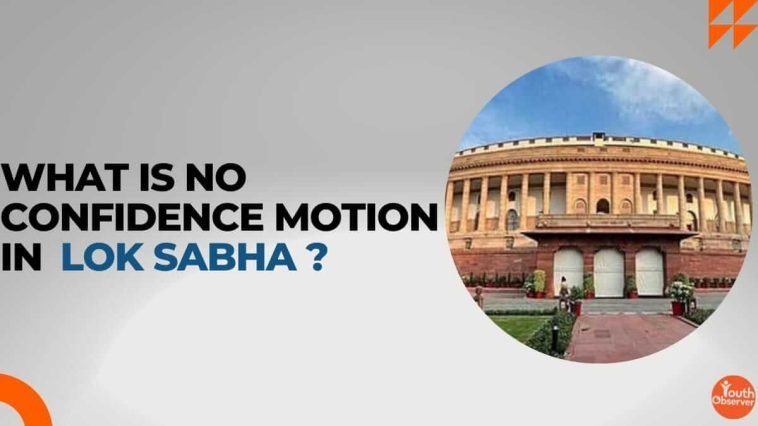A crucial legislative process that permits the challenge of the government’s majority and efficacious governance is a no-confidence motion in the Lok Sabha. This article delves into the intricacies of a no-confidence motion, its implications, and the process involved in initiating and executing this crucial parliamentary mechanism.
1. Understanding No Confidence Motion
A no-confidence motion is a parliamentary motion in the Lok Sabha that is directed against the full council of ministers. It expresses disapproval of the ministers’ suitability for positions of authority on the grounds of perceived shortcomings or failures to perform duties. This motion serves as a powerful tool for the opposition to question the government’s legitimacy and performance.
2. Initiating a No Confidence Motion
The Constitution of India does not explicitly mention confidence or no-confidence motions. However, Article 75 specifies that the Council of Ministers is collectively responsible to the Lok Sabha. To introduce a no-confidence motion, a minimum of 50 members must support the motion in the Lok Sabha under Rule 198. Once the Speaker deems the motion in order, it is presented for discussion and voting.
3. Procedure for No Confidence Motion
- Only the Lok Sabha may introduce a motion of no confidence.
- The motion requires the support of at least 50 members to be admitted for discussion.
- The Speaker of the Lok Sabha oversees the proceedings and ensures the motion is debated within a specified timeframe.
- If the motion is passed by a majority vote in the House, the government is obligated to vacate office, signalling a loss of confidence in its leadership.
4. Implications of a No Confidence Motion
- A successful no-confidence motion results in the government resigning from office.
- The motion serves as a litmus test for the government’s support and legitimacy in the Lok Sabha.
- It highlights the accountability of the government to the elected representatives and the public at large.
5. Historical Context and Significance
- The first-ever no-confidence motion in the Lok Sabha was moved by Acharya Kripalani in August 1963.
- Over the years, several no-confidence motions have been introduced, reflecting the evolving dynamics of Indian politics.
- The outcome of a no-confidence motion can have far-reaching consequences on the government’s stability and future course of action.
6. Role of No Confidence Motion in Governance
- The no-confidence motion acts as a crucial mechanism for ensuring transparency, accountability, and oversight in the functioning of the government.
- It provides a platform for robust debates, discussions, and assessments of the government’s performance and policies.
- The motion underscores the democratic principles of checks and balances within the parliamentary system.
In conclusion, a no-confidence motion in the Lok Sabha is a pivotal parliamentary tool that holds the government accountable, tests its majority, and reflects the democratic ethos of India’s governance framework. By understanding the nuances of this motion, citizens can grasp its significance in shaping the political landscape and upholding the principles of democratic governance.

